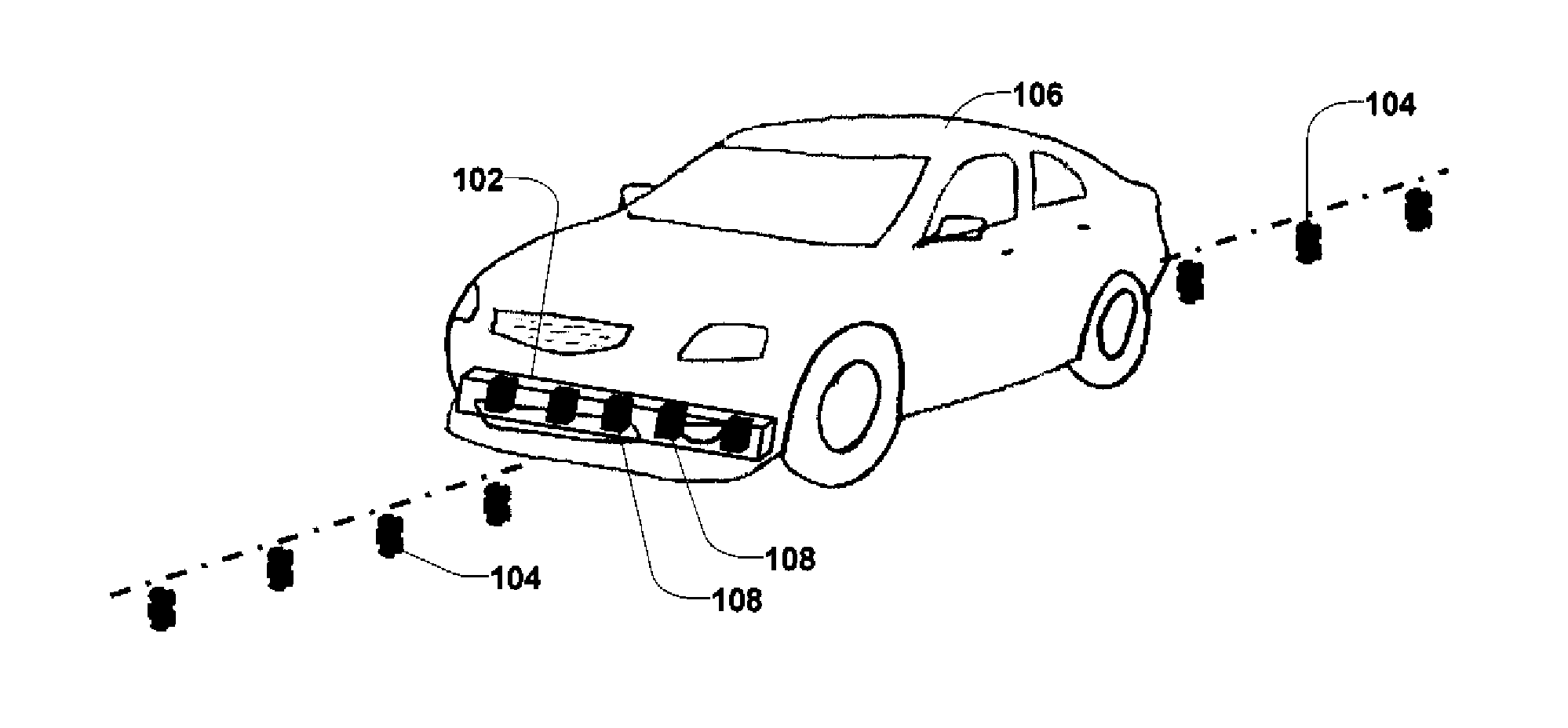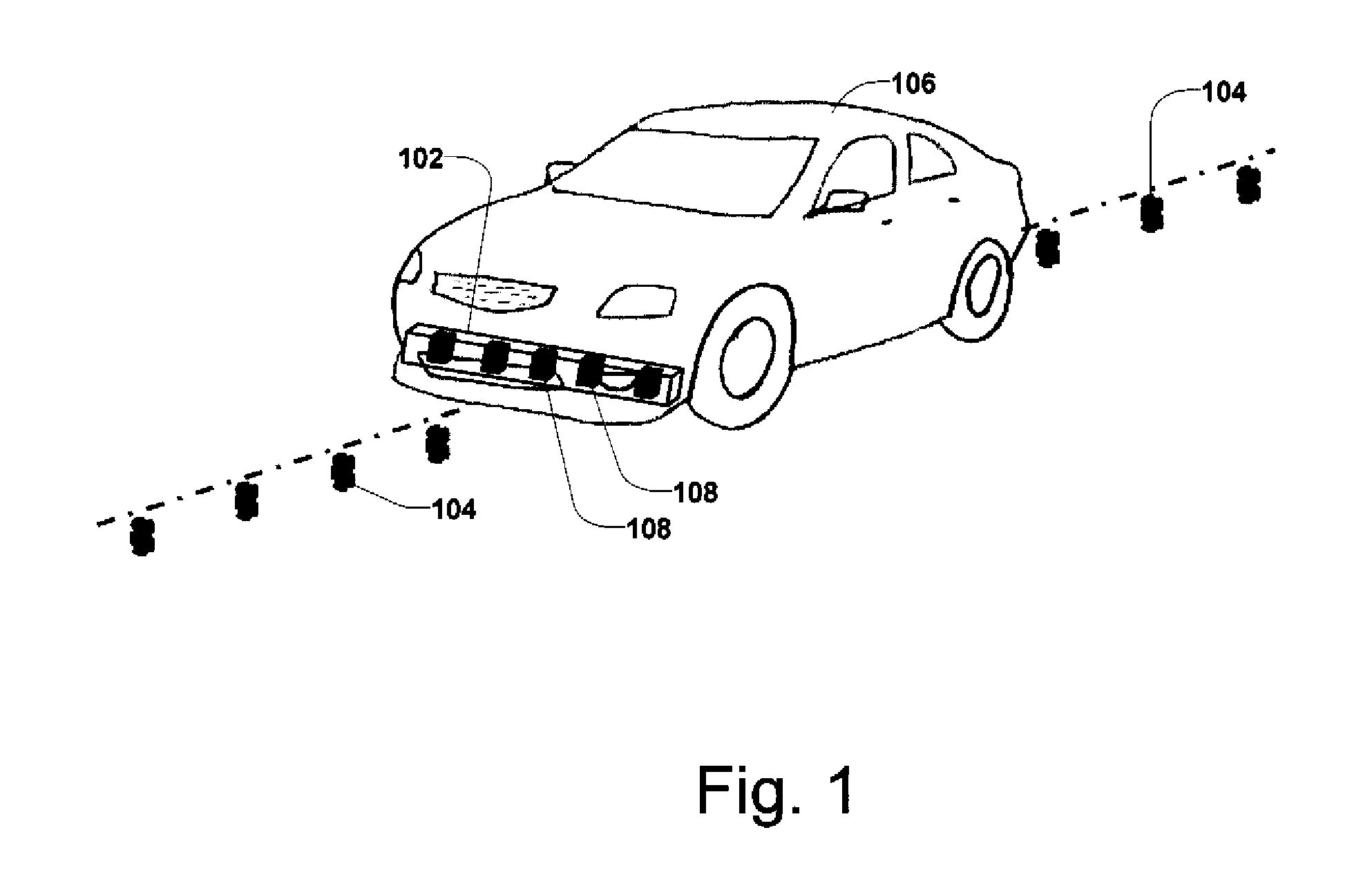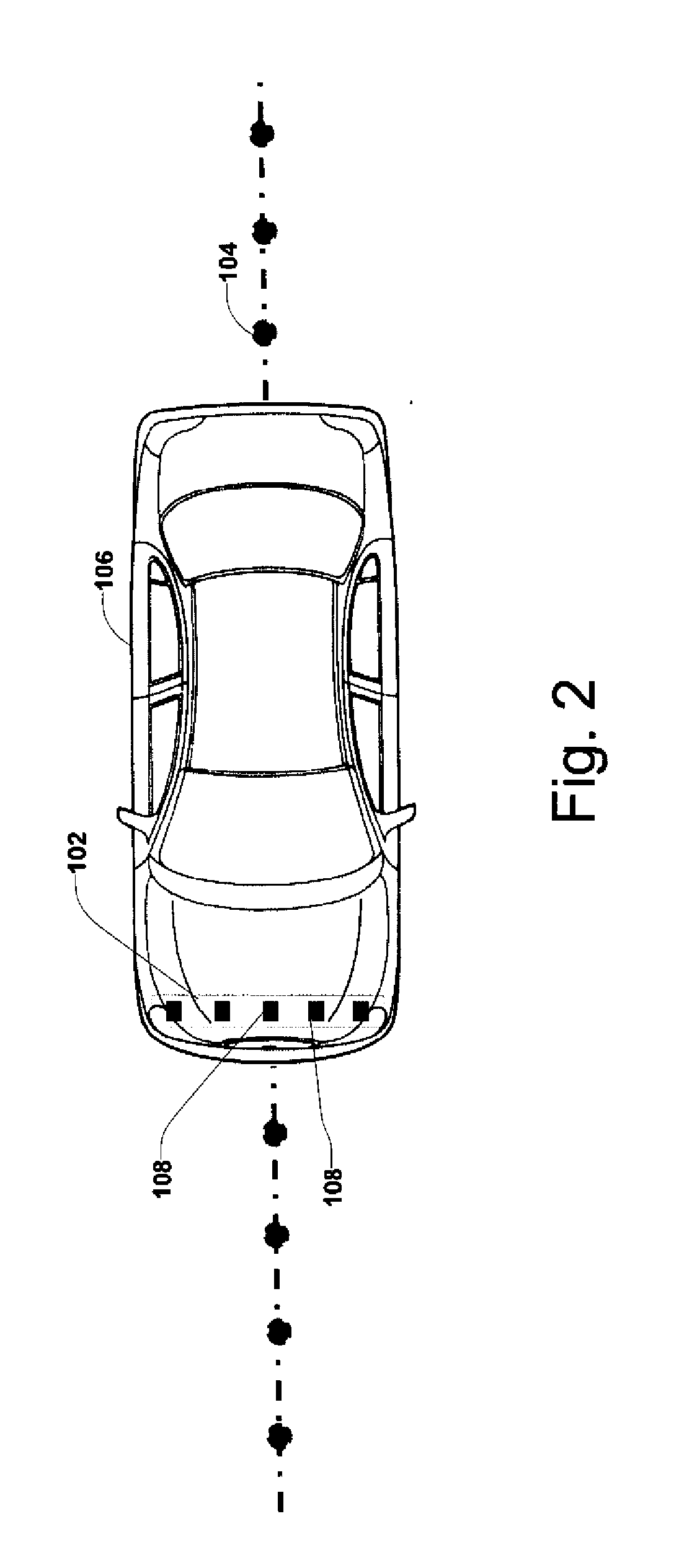Position sensing system for intelligent vehicle guidance
a technology of position sensing and intelligent vehicle guidance, applied in underwater vessels, special data processing applications, non-deflectable wheel steering, etc., can solve problems such as signal blockage and multipath of dgps based systems, difficulty in poor visibility of vision-based systems, and other possible noise sources
- Summary
- Abstract
- Description
- Claims
- Application Information
AI Technical Summary
Benefits of technology
Problems solved by technology
Method used
Image
Examples
Embodiment Construction
[0042]FIG. 1 is an isometric view and FIG. 2 is a top view of a mobile object 106 including a first embodiment of a position detection apparatus 102 that is capable of determining a position offset between the position detection apparatus 102 and magnetic markers 104 installed along a roadway along which the object 106 is traveling. By detecting the position offset from the magnetic markers 104, the position detection apparatus 102 provides a lateral deviation of the mobile object 106 from the roadway.
[0043]FIG. 3 is a block diagram 100 showing the position detecting apparatus 102 separated from the object 106. In this embodiment, the position detection apparatus 102 includes at least two magnetic field sensors 108 and a processor 110. Five magnetic field sensors 108 are shown in FIG. 1, FIG. 2, and FIG. 3 only for illustration purposes. The sensors 108 may be integrated into the same enclosure or be separated packaged into separate units.
[0044]Each sensor 108 consists of at least t...
PUM
 Login to View More
Login to View More Abstract
Description
Claims
Application Information
 Login to View More
Login to View More - R&D
- Intellectual Property
- Life Sciences
- Materials
- Tech Scout
- Unparalleled Data Quality
- Higher Quality Content
- 60% Fewer Hallucinations
Browse by: Latest US Patents, China's latest patents, Technical Efficacy Thesaurus, Application Domain, Technology Topic, Popular Technical Reports.
© 2025 PatSnap. All rights reserved.Legal|Privacy policy|Modern Slavery Act Transparency Statement|Sitemap|About US| Contact US: help@patsnap.com



